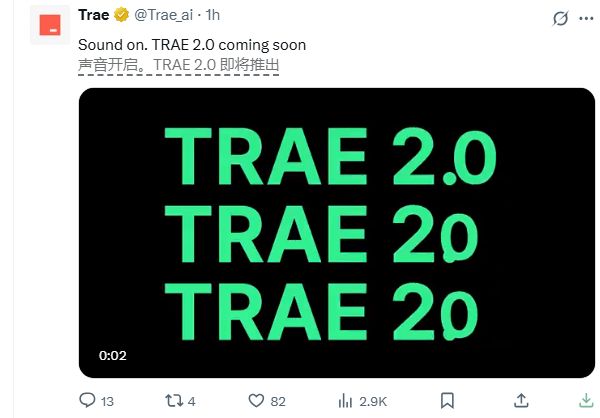ByteDance Unveils TRAE2.0 with Voice Interaction for Developers
ByteDance's TRAE2.0 Set to Transform AI-Assisted Programming
ByteDance has announced the imminent release of TRAE2.0, a significant upgrade to its AI-powered programming environment that introduces voice interaction capabilities alongside enhanced coding functions. The update comes just six months after the successful launch of TRAE1.0, which established itself as a competitive "AI-driven developer workspace."

Next-Generation Developer Tools
The new version represents what ByteDance describes as an evolution into "the era of deep collaboration and multimodal capabilities." TRAE2.0 maintains its foundation as a modern IDE with integrated AI assistance while expanding its functionality to support more natural developer interactions.
"The addition of voice control fundamentally changes how developers can interact with their coding environment," noted a ByteDance spokesperson. "This isn't just about convenience—it's about creating new paradigms for human-AI collaboration in software development."
Technical Foundations and Compatibility
Built on the VS Code kernel, TRAE continues to support major AI models including:
- Claude
- DeepSeek
- ChatGPT
The platform's Builder mode and advanced code generation capabilities provide developers with Copilot-like assistance while maintaining the flexibility of a full-featured IDE.
Market Impact and Availability
The rapid iteration from version 1.0 to 2.0 demonstrates ByteDance's commitment to establishing TRAE as a leader in the competitive AI-assisted development space. Industry analysts suggest the voice interaction feature could give ByteDance an edge as developers increasingly seek more intuitive ways to work with AI coding assistants.
Key Points:
- Voice Interaction: New hands-free coding capability marks a paradigm shift in IDE design
- Enhanced AI Features: Strengthened code generation and analysis tools
- Multi-Model Support: Continues compatibility with leading LLMs including Claude and ChatGPT
- Rapid Development Cycle: Version 2.0 follows just six months after initial launch